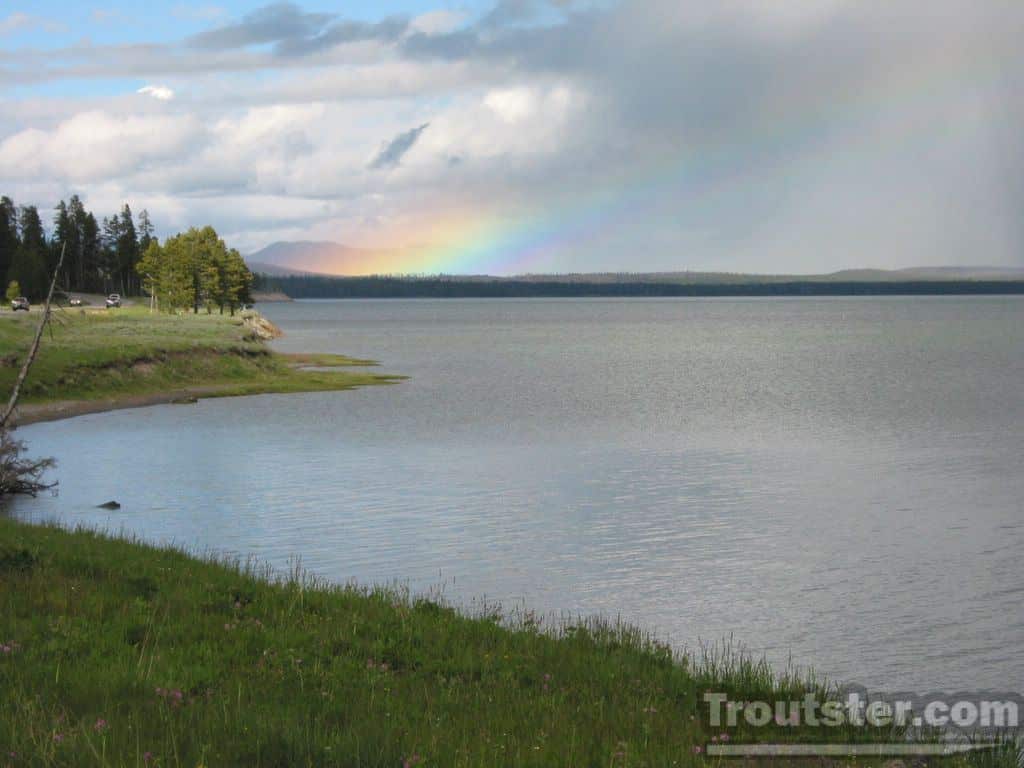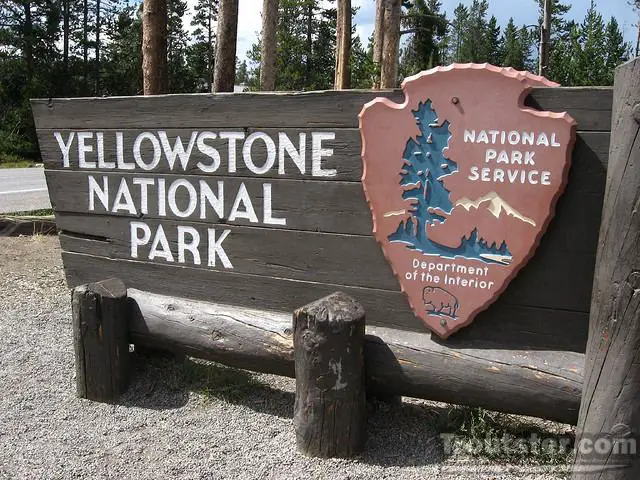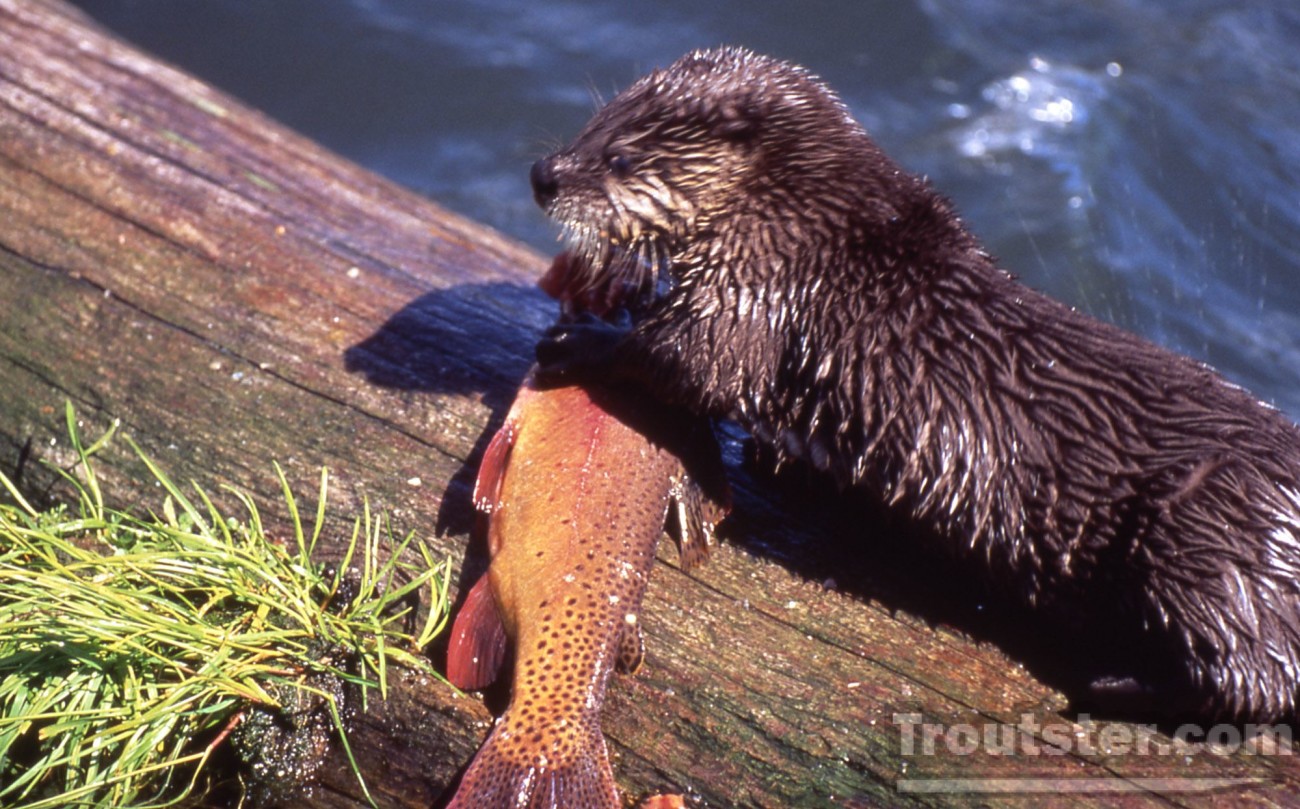This post was last updated on October 7th, 2014 at 07:02 pm
Yellowstone Lake: Winning The Battle Against The Lake Trout
No one knows exactly when, or the motivation of the person that did it, but sometime back in the 1970s or 1980s, someone performed what’s known informally in wildlife management as Bucket Biology at Yellowstone Lake at Yellowstone National Park in Wyoming.

Bucket Biology and the Lake Trout are Wreaking Havoc In Yellowstone Lake

Bucket Biology, sometimes referred to as Bait Bucket Biology, is a lighthearted term for a serious problem. It refers to the dumping of a bucket of fish into a body of water where they are not native. Introducing non-native species to an ecosystem, especially one that has been isolated for a long time, can have huge, far-reaching effects that few can predict in advance.
Invasive species turn up in unexpected places all the time due to carelessness or unlikely modes of transportation. Mussels can tag along on the bottom of a ship that enters a lake from the sea. Tree-destroying beetles hitch a ride on shipping pallets that travel internationally. Even firewood transported from place to place for a campfire can be a problem. In addition to inadvertent Bucket Biology, abandoned pets can run wild. People keep unusual pets these days, and when they get bored of them, let them loose. That’s how you end up with boa constrictors in the Florida Everglades.
Sometimes Adding More Fish Results In Fewer Fish
It’s very unlikely the Bucket Biology problem in Yellowstone was an innocent error. It’s much more likely that someone thought they’d like their favorite fishing hole to have more fish, or a different kind of fish, and they brought enough lake trout fry (salvelinus namaycush) to survive in a lake that had only known Yellowstone Cutthroat Trout (Oncorhynchus clarkii bouvieri).
A Yellowstone cutthroat trout is a magnificent and unusual-looking fish. It’s a rich greenish-brown, speckled with deep brown spots, and marked by a striking red patch around the gills, hence its name. Besides being a favorite of anglers for decades, the cutthroat trout is an essential link in the food chain of Yellowstone, providing part of the diet of animals as diverse as bears and eagles. Cutthroat trout are also on the menu for something else: Lake Trout.
Lake Trout Are A Formidable Fish
Lake trout are very different fish than cutthroat trout. Lake trout can grow huge, over 50 pounds at the high end, and they live longer too, with life spans over 20 years. They live longer, eat more, and they eat cutthroat trout. A lake trout can eat 41 cutthroat trout in a year. Coupled with the lake trout’s long lives and big size, that’s a recipe for extinction for Yellowstone cutthroat trout.
Many Animals Rely On The Cutthroat Trout

The problems with the competition between lake and cutthroat trout don’t end there. Lake trout aren’t harvested by predators at anywhere near the rates of cutthroat trout. Lake trout are bigger and like to stay in the deepest parts of the lake. Ospreys, bears, eagles, otters, and other animals that could catch cutthroat trout in shallow water never get a chance at lake trout, and even anglers find them difficult to catch.
Wildlife experts at Yellowstone tracked a 90 percent reduction in mating pairs of ospreys, a bird that relies heavily on fish, in just ten years. Grizzly bears have likewise seen the supply of easily caught cutthroat trout nearly disappear in shallow riverbeds where the trout go to spawn. The demise of the cutthroat trout in Yellowstone Lake and tributaries would have a massive effect on the animal life there.
Taking Action Against The Lake Trout
Yellowstone Park officials are taking action to ensure that the Yellowstone cutthroat trout doesn’t join the ranks of the Alvord and yellowfin, two species native to the area that are already extinct. Since 2011, restoring the cutthroat trout population in Yellowstone has become a top priority with the National Park Service, Trout Unlimited, the National Parks Conservation Association, and the Greater Yellowstone Coalition. They’ve instituted a program of gillnetting trout in the deepest parts of the lake, and have removed as many as 300,000 lake trout in one year.
That approach appears to be paying dividends. Biologists say that it’s getting more difficult to net and kill lake trout each year, and that indicates that their populations are starting to dwindle. Some have worried that the gill nets that capture the lake trout can also snag cutthroat trout, but biologists say that fewer than five percent of the fish caught are cutthroat trout, and many of these fish are still alive when hauled in and are returned to the lake.
It’s Expensive To Fix Bucket Biology Problems
Detractors of the program usually don’t argue with the merit of the program, but point out how expensive it is. It’s very labor intensive to net the lake trout and eliminate them, and it’s expensive to hire people to do it. Yellowstone Park has a $3 million annual budget dedicated to controlling invasive species of all kinds, and 2/3 of it is currently being spent on controlling lake trout. The money is collected from fishing licenses issued for the park, donated by Trout Unlimited, and from the Yellowstone Park Foundation. Scientists have suggested that the netting program will have to last at least a decade to have the desired effect on the explosion of the lake trout population at the expense of the cutthroat trout population.
Cutthroat Trout Are Central To Yellowstone’s Health
Concerned citizens and lovers of Yellowstone Park are wondering if the problem of controlling the population of lake trout in order to boost populations of cutthroat trout is worth the amount of time, money and attention it gets at the expense of other invasive species management programs, but biologists point to the central role that Yellowstone cutthroat trout play in the ecosystem in the area, and how helping the cutthroat is a shortcut to bolstering populations of dozens of species of animals that make the Park their home.
Yellowstone Lake was once referred to as the safety deposit box for the cutthroat trout, and hopefully the population control measures taken for the lake trout will once again make it worthy of the title. Fishing in Yellowstone Park still is a great place to hook several species of trout and even grayling.
